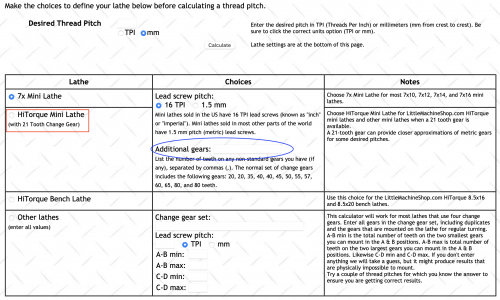I think you have the same set of gears that I had found, except I also had a 21 and you seem to have a 30. That is 20, 21, 35, 40, 45, 50, 55, 57, 60, 65, 80. (a count of 11 not counting any duplicates.) I had read that 20, 40, 80 had duplicates. (In you list I count 13, but 2 are duplicates so that make 11 unique gears, without the 21). My understanding from the LMS web site that the 21 and 57 were extra gears that could be purchased. Also, according to the threading table of page 30 of the manual
https://littlemachineshop.com/images/gallery/ug/4100 Mini Lathe Users Guide - DISCONTINUED.pdf there is no 30 shown. While on page 9 it says
Change gears: 21, 30, 35, 40 (2), 45, 50, 55, 57, 60, and 65 teeth. But else where for the standard feed it says there are 20(2) and 80(2). So here it says there is a 30, but it is not used in the threading table!
Ironically, at the LMS Thread calculator,
https://littlemachineshop.com/reference/change_gears.php, lists the gears and leaves out the 21 and the duplicate 40. "The normal set of change gears includes the following gears: 20, 20, 35, 40, 40, 45, 50, 55, 57, 60, 65, 80, and 80 teeth." So much inconsistancy. What is one to do!?
Also in the manual for the DRO there is a poor quality picture of the gears laid out on a table and it shows 11. One of them could be a 30 or a 21 it is impossible to say, or even if this picture has any meaning. .
So it seems if one can believe anything, a complete set might be : 20(2), 21, 30, 35, 40(2), 45, 50, 55, 57, 60, 65, 80(2). A total of 12 unique gears +3 duplicates. But all that is important is what the user has on hand. So for my workbook the total possible combinations (without removing duplicates) would be 12^4 = 20,736. I will add the 30 to my workbook and a user can remove what ever he does not have or add others if he has them.
So in my current workbook, I use the same set of unique of gears at every axle. In other words the computations are done as though one has 4 copies of each gear. This is how I got to the 12^4 combinations. Until I find time to modify the macro to check to make sure there are not too many copies of a gear is being use, it will just have to be up to the operator to realize the impossible cases.


